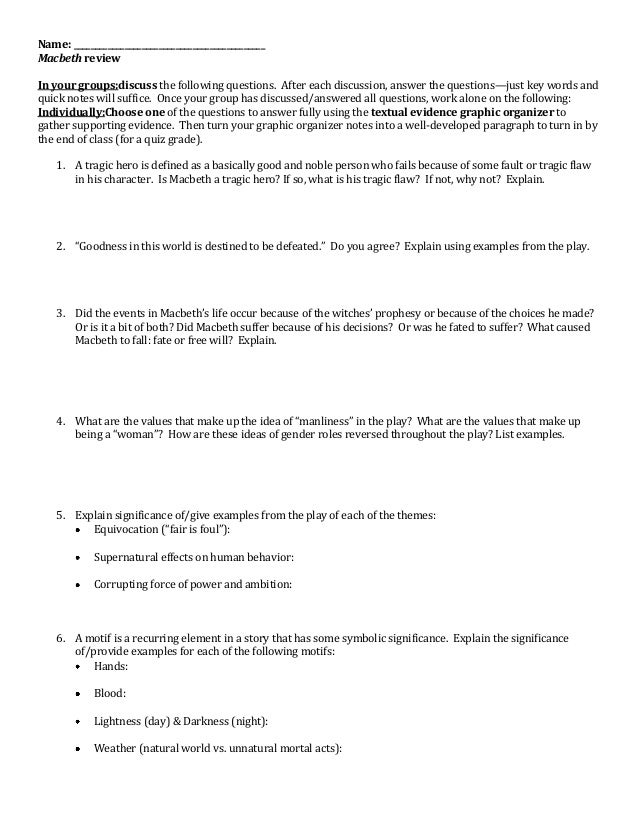
Fair is Foul and Foul Is Fair (Macbeth)
· Evil and foul prophecies will cloud Macbeth’s judgment, making him think that they are fair and what he needs to follow. They are foul in their motives but their words are fair and their wordplay cannot be defined as lying but they skillfully dance around the truth. To the witches foul is fair and vice versa. You can also say that what is foul to any normal human is what is ‘Fair is foul and foul is fair: Hover through the fog and filthy air.’ An owl that is prey to falcon has killed the falcon. Duncan’s horses have gone wild in nature, broke their stalls, and ate each other. This embraces the power that evil has not only over people but throughout the whole world · Fair is Foul and Foul Is Fair (Macbeth) In the play Macbeth, authored by William Shakespeare, the main actor Macbeth presents the picture and actions of a humble and loyal servant to King Duncan. Macbeth carries out all of his duties diligently and with dedication. He earns the trust of not only the king but the other servants as well
Recent Posts
One of the most significant motifs in Macbeth is Foul and Fair. This motif is found in many parts of the play in different forms. It is most commonly expressed is when the character’s mood and perspectives change constantly. For example “Fair is foul, and foul is fair: / Hover through the fog and filthy air’ () Fair is Foul, Foul is Fair Analysis in Macbeth. The phrase “ Fair is Foul, Foul is Fair ” (Act 1, Scene 1) is chanted by the three witches at the beginning of the play. It acts as a summary of what is to come in the tale. Shakespeare uses the phrase to show that what is considered good is in fact bad and what is considered bad is actually good Darkness, thunder and lightning, a desert place and three witches, who, in a few short lines, chanting in a weird, unworldly rhythm, tell us what to expect from this play – the inversion of values, good becoming evil and evil becoming good (fair is foul and foul is fair); a hero who is to have a momentous meeting with the witches who have appeared specially for that; the
Categories
Darkness, thunder and lightning, a desert place and three witches, who, in a few short lines, chanting in a weird, unworldly rhythm, tell us what to expect from this play – the inversion of values, good becoming evil and evil becoming good (fair is foul and foul is fair); a hero who is to have a momentous meeting with the witches who have appeared specially for that; the · The witches express their evil with their chant and the final couplet, 'Fair is foul, and foul is fair' (), this statement violates God's natural order, because good is bad and bad is good. The witches also give the image of evil by the way they dress and act · Fair is Foul and Foul Is Fair (Macbeth) In the play Macbeth, authored by William Shakespeare, the main actor Macbeth presents the picture and actions of a humble and loyal servant to King Duncan. Macbeth carries out all of his duties diligently and with dedication. He earns the trust of not only the king but the other servants as well
More Essay Samples on Topic
In the play Macbeth by William Shakespeare, the characters are often mislead by the impression of reality. The quote “fair is foul and foul is fair” (Shakespeare ), is said by the three witches. This quote is very significant, as it is an elaborate theme throughout the play. Also, the word "fair" means good, and "foul" means evil · Evil and foul prophecies will cloud Macbeth’s judgment, making him think that they are fair and what he needs to follow. They are foul in their motives but their words are fair and their wordplay cannot be defined as lying but they skillfully dance around the truth. To the witches foul is fair and vice versa. You can also say that what is foul to any normal human is what is Darkness, thunder and lightning, a desert place and three witches, who, in a few short lines, chanting in a weird, unworldly rhythm, tell us what to expect from this play – the inversion of values, good becoming evil and evil becoming good (fair is foul and foul is fair); a hero who is to have a momentous meeting with the witches who have appeared specially for that; the
· The witches express their evil with their chant and the final couplet, 'Fair is foul, and foul is fair' (), this statement violates God's natural order, because good is bad and bad is good. The witches also give the image of evil by the way they dress and act Fair is Foul, Foul is Fair Analysis in Macbeth. The phrase “ Fair is Foul, Foul is Fair ” (Act 1, Scene 1) is chanted by the three witches at the beginning of the play. It acts as a summary of what is to come in the tale. Shakespeare uses the phrase to show that what is considered good is in fact bad and what is considered bad is actually good ‘Fair is foul and foul is fair: Hover through the fog and filthy air.’ An owl that is prey to falcon has killed the falcon. Duncan’s horses have gone wild in nature, broke their stalls, and ate each other. This embraces the power that evil has not only over people but throughout the whole world
No comments:
Post a Comment